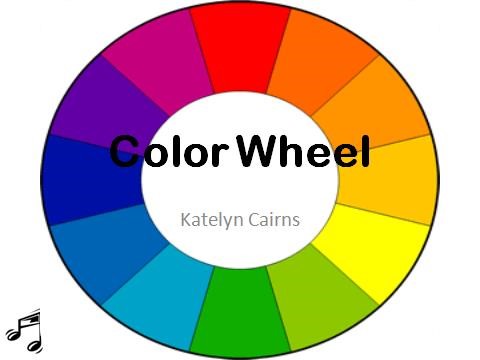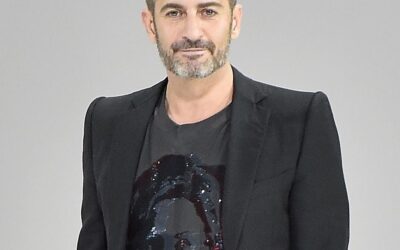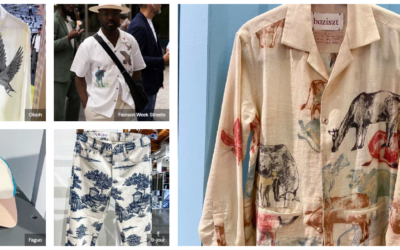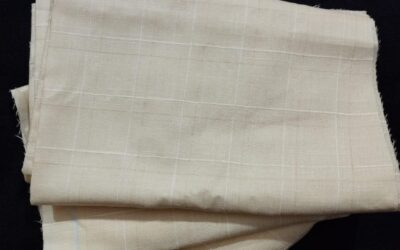Color forecasting in fashion possesses a great importance because color is an integral part of fashion and fashion design as a marketing tool. Color forecasting takes into account the color evolution, social and economic trends, consumer preferences and other influences. Colors are forecasted by synthesizing color direction from signs, hints and traces in the cultural environment. Let’s dive into the realm of color forecasting in fashion in details!
Objectives
- Appreciate color as a marketing tool
- Understand the process of forecasting color, taking into account color evolution, social and economic trends, consumer preferences and other influences.
- Recognize color forecasting as a coordinating factor in the apparel supply chain from fiber producer to retailer.
- Become aware of the techniques forecasters use to synthesize color direction from signs, hints and traces in the cultural environment.
Color Forecasting
- One of the most important function of the design director is to forecast color. Company’s fashion forecasters attend the trade shows in United States and Europe and participate in the professional color forecasting services.
- Color forecasting begins with attending the brain storming meeting with other forecasters at an international meeting of color professionals.
- Each participant creates a concept board proposing a direction for colors that will dominate fashion two years in the future.
- Color decisions begin early in the product development cycle. For designer a new collection begins with the selection of a color palette. From the first step it will be from six months to nearly one year before those colors appear as a coordinated collection on the runway or in the showroom.
- The color story combines into prints, yarn dyed fabrics, and solids and coordinated across jackets, tops, skirts, pants and dresses into a collection .
- Professional color organizations bring together experts to collaborate on forecasts for industries such as women’s wear, men’s wear, children’s wear and residential and nonresidential interiors.
- Forecasting for the American consumer began in 1915 with the founding of the Textile Color Card Association of America, predecessor to today’s Color Association of the United States (CAUS).
- Group of manufacturers and retailers used textile industry specialists to select fashion shades that would be popular in the future.
- The idea of forecasting trends in the marketplace boomed in the years after World War II. Trend merchandising entered the mass market in the early 1980s when trends became a coordinating factor for full product lines that extended beyond a single merchandise category.
- Today, trend merchandising and color forecasting are an integral part of product development.
- Color forecasters work 18 to 24 months in advance of the season to provide input for the designer’s decisions. To work so far ahead, Color forecasters/experts must combine knowledge of color theories and human behavior with acute observational skills.
- The experts spot new color directions at a trade show, on the fashion runway or in the streets.
Color Forecasters
Color forecasters forecast the colors by synthesizing the mood of the times from all the diverse elements of the culture – the economic conditions; happening in the fine arts; and music, movies and TV shows that top the charts – color forecasters track the trends and recognize new directions.
- Color looks different depending on the fabric, so color forecasters also stay up to-date on new developments in fibers, yarns and fabrications.
- To accomplish the task forecasters needs a background in the industry, a network of contacts and requires to travel the globe attending relevant trade shows and shopping the locales where new ideas originate.
Color in Marketing
- Marketing fashion means positioning the product in the marketplace. Color plays a major part in positioning apparel products by attracting attention, establishing the image of the product and the brand and evoking symbolic associations.
- Marketers use the psychological power of colors to communicate with consumers through advertising, brand logos, packaging and product colors. A consumers first impression of a new product is largely mediated by the color.
- Some fashion companies have signature color ranges – Calvin Klein’s use neutrals and Tommy Hilfiger’s bold primary colors, but others follow seasonal color trends.
- Emotions associated with hues and desire for individuality and personal expression through color selection influences the selling of different color products.
Color tends to identify the target market, for example – bold primaries for children’s products and trendy whimsical colors to appeal to teens. With influences from television, toy marketing and computers, children’s preferences tend towards bright colors that adults generally avoid.
Color Segmentation
Segmentation by color preferences makes it important for product developers and marketers to carefully observe the target market – watch consumers in their natural habit, read what they read, listen to their music, watch their movies and research their preferences.

96 Color wheel. Photo courtesy: Tanvir Ahamed Fahad.
Psychology of Color
- The power of color comes from its symbolic meaning for people. Colors can represent experiences, emotions, status and other types of information that are difficult to conveying written or spoken language.
- Some color symbols have religious origin: such as Mother Mary in Blue as a symbol of Truth and Justice. According to some mythology Green is the symbol of Fertility.
Influencing Factors in Color Forecasting
Different factors influences the psychology of color preferences. A study showing a consistent order of color preferences in adults: the first choice was Blue, followed by Red, Green, Purple, Yellow and Orange.
Culture
- Cultural influence: Same color is interpreted differently in different cultures. A research found that most primitive cultures distinguish meanings mainly between Black and White. If a third color is used it is always Red; the next two colors are Yellow and Green; then Blue is added.
- Blue as protective color toward off evil spirit can be found in cultures as disparate as the middle east and Native Americans in the Southwest.
Culture & Status in Color Forecasting
- Due to increasing global communication and trade, the color forecasters must constantly investigate the cultural symbolism and cross cultural implication of color.
- Color preferences associated with Cultural Status – lower socio economic consumers tend to prefer simple colors and higher income people prefers more complex and newer colors.
Environment in color forecasting
Regional and Environmental Conditions: also play a major role in color preferences. Polly Hope an artist has observed – color as a representation of a country’ personality. She finds a distinctive “color conception of a place” that results from the combination of the natural environment and the indigenous culture.
Ethnic Identity/ Geographic Region
- Ethnic Identity or Geographic region has a relationship between color preferences. A survey in USA found White consumers were more likely to select Red, AfricanAmericans prefers Black and Hispanics Bright Blue.
- Color preferences can arise from personal experiences – for example, a person’s positive or negative reaction to the color develops as their parents chose for them in childhood.
- American consumers selects mid-range blue is consistently selected as the favorite color.
Issues
Green became important in all categories of products from Tshirts to automobiles to kitchen appliances when consumers became acutely aware of environmental issues in the early 1990’s
So there is a collective color preference underlying the surface of seasonal fashion change.
Different Meanings
In today’s complex color landscape a single color can have multiple symbolic meanings. In 1995 a survey signified the color Black as mystery, power, masculine, depressing and conservative.
Consumer Categories according to Color Preferences
- The Cooper Marketing Group divides consumer into three categories: color forwards, color prudent and color loyal.
- The color forward consumer enjoys being the first to try a new color but may shop for color ideas at both discounters and upscale department stores.
Consumer Categories
- The color prudent are the main stream consumer and wait until a color has more wide spread acceptance before buying it.
- The color loyal play it safe with color, sticking with classic blue or grey instead of choosing fashion colors.
Judgment of such mental images can help color forecasters justify their color choices and clarify the fit between color selection, product category and the consumer target.
The Language of Color
General terms are not sufficient for communicating color information for design and manufacturing. Exact identification, matching and reproduction of colors requires an effective system with colors arranged in sequential order and identified with numbers and letters. Such systems are based on basic three characteristics of colors – hue, saturation and value.
- Hue: refers to the color – each color system designates a set of basic colors.
- Saturation (also called intensity or chroma) refers to the strength or purity of color.
- Value: lightness or darkness of color
- Tint: the term Tint applies to any color when white is added
- Shade: refers to colors mixed with black Tone: describes a grayed color.
Color Wheel

Seasonal Color Analysis
- In this system color grouping relates to natures four seasons – spring and autumn have a warm undertone, summer and winter have a cool undertone.
- The seasons are further defined by the saturation of the colors
– spring and winter colors are clear, bright and vivid;
- – autumn and summer are more subdued and less intense.
- The goal was to provide consumers with insight into the “right” colors to enhance their personal coloring and the “wrong” colors that should be avoided.
Colors for Four Seasons
| COOL | WARM | |
| BRIGHT | Winter
•Cool Undertone •Colors Clear & Bright |
Spring
•Warm Undertone •Colors Clear & Bright |
| LESS INTENSE | Summer
•Cool Undertone •Colors Subdued |
Autumn
•Warm Undertone •Colors Subdued |
Color Names
- Changing the color of a product keeps the appeal of the new when the product itself does not change much.
- The color forecaster works in the two worlds of color naming – writing product specifications using the notation of particular color systems and marketing using color names that coordinate with a theme.
- Naming a color for marketing means drawing attention to its attributes by linking the color with the consumer’s perceptions.
- For example, a light brown “café au lait”- no two people would visualize in the same way. But the theme (a delicious and deluxe cup of coffee), the season (autumn), the color key (warm), the color family (brown) and the value of the color (light) all are conveyed by the color name.
- Even fashion ability can be captured in the color name if it recalls cultural references. In case of “café au lait” the reference is to coffee bars and gourmet coffee as high fashion concepts.
- Naming colors takes imagination, sensitivity to fashion change across product categories, an understanding of the consumer’s perception of colors and the insight to make connections between color and the product’s end use.
- Most color names come from associations in the environment.
- Natural phenomena: sky blue, sunshine, grass green, snow white
- Flora: Poppy red, moss green, mahogany, orchid.
- Fauna: flamingo pink, robin’s egg blue, dove gray.
- Gemstones, minerals, and metals: amethyst, lapis, amber, slate grey, copper.
- Food & Drink: caramel, apricot, champagne, burgundy.
- Spices: cinnamon, paprika, curry.
- Dyes: indigo, cochineal
- Building Materials: brick, terra-cotta, bronze.
- Location: Capri blue, Pompeian red.
- Today the color forecaster, the manufacturer, and the retailer routinely use color names to link fashion change to shifts in the culture.
This resource is taken from the lecture material of Mozahida Akhtar, Lecturer, Department of Textile Fashion and Design, Bangladesh University of Textiles (BUTEX).
Related articles:
Color Psychology: Which Color Means What?
To know the biggest fashion trends of 21st century, you can visit here! Moreover, if you want to know the future of fashion industry after Covid-19, you can click here!
And if you want to read one of our premium case studies on Fast Fashion Vs Slow Fashion, you can go here!
More related articles:




0 Comments